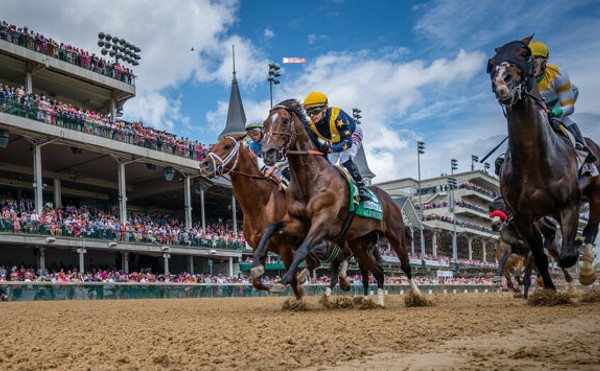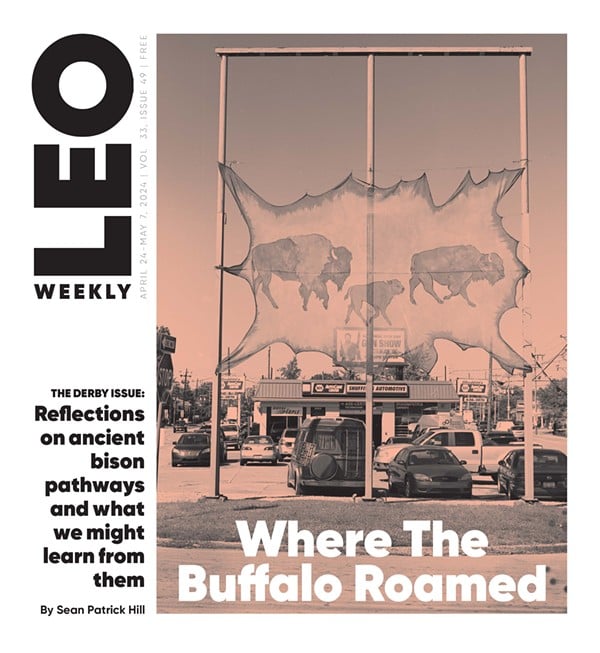Roller Coaster Shenanigans
Regarding the latest twist in the Kentucky Kingdom debacle ... in late 2011, there was a debate regarding the introduction of expanded gaming to Kentucky. One argument in favor was that “riverboat” casinos across our border were drawing Kentucky entertainment dollars into Indiana. At the same time, the Kentucky State Fair Board walked away from negotiations with Louisville businessman Ed Hart, who was attempting to regain control of Kentucky Kingdom, the amusement park he built and successfully managed. Immediately after this reversal, the Fair Board announced they would be offering our community asset to Indiana’s Koch family, operators of a competing park.
How could we reasonably voice concern about gambling profits being siphoned off by our northern neighbor if we were willing to allow our family-friendly entertainment dollars to profit an Indiana-based corporation? How would allowing this out-of-state entity to reduce one of our top regional entertainment draws into a glorified swimming hole benefit Louisville’s economic development? Since the Fair Board has refused to disclose why it rejected Hart’s deal in the first place — and proclaims now to favor unnamed national operators over local talent — I am asking Mayor Greg Fischer to put aside past political rivalries and to bring Hart back into negotiations with the Fair Board. Hart is the only party involved in this fiasco who has the experience and funding necessary to get the park operating quickly and profitably. Please show some leadership, Mr. Mayor. This situation is quickly becoming a national embarrassment.
Brian Smith, Germantown
Not So Green
I read with extreme interest Melissa Moody’s article “Being green” in LEO’s June 27 issue. From a distance, I have watched an old hometown of mine, Greenville, N.C., go down the tubes as a result of poor urban planning. Greenville lies on the fringes on an area designated as “The Great Dismal Swamp” in eastern North Carolina and is home to poisonous snakes, mosquitoes and some other not-so-glamorous creatures. From my old kitchen window, I once witnessed a red-tail hawk grab a 6-foot cottonmouth and fly off with it out into the cypress swamp, which was our backyard. On my most recent visit, I saw a brown fox investigating the woodpile in the front yard. Definitely not ideal real estate for strip-mall and multi-family housing units, which have become the primary forms (i.e. most “profitable”) of urban development executed by the latest wave of 21st-century carpetbaggers with connections in Greenville’s decidedly un-green City Council.
George Washington visited Greenville in 1791 and called it “... a dirty little town on the Tar River.” Today it may very well qualify as the strip-mall capital of the South.
My family’s homestead is situated in what has been designated (for insurance purposes, I suppose) as a “100-year flood plain.” During the ’60s and ’70s while I was living there, our backyard would for a short time become the shore of a small lake each winter and spring, or summer, if it were in the path of a hurricane. But the house never flooded. Since moving to Louisville in the late ’70s, my sister has been forced to evacuate that same house not once, not twice, but three times, and has survived several other minor floods. FEMA says if it happens again, it will pay to jack the house up and have it put on stilts. So much for the “100-year” label.
Developers in Greenville over the last 40 years have poured so much concrete that the water from the seasonal rains and occasional hurricane has nowhere else to go except into neighboring residential area yards and homes.
This is not rocket science. Water seeps into the ground and puddles and pools on asphalt/concrete. Yet permits continue to be approved to develop more land in these areas, with the result of more and more earth being covered with parking lots.
Someone please explain to me what is going on here.
Gregory Clark, St. Matthews





